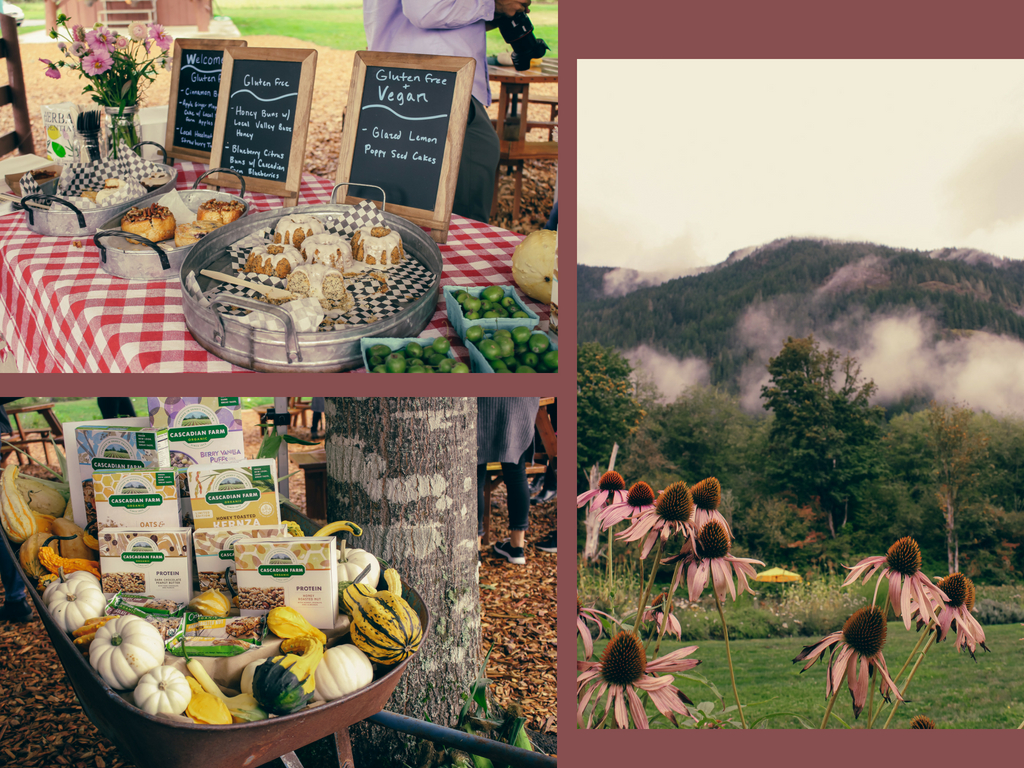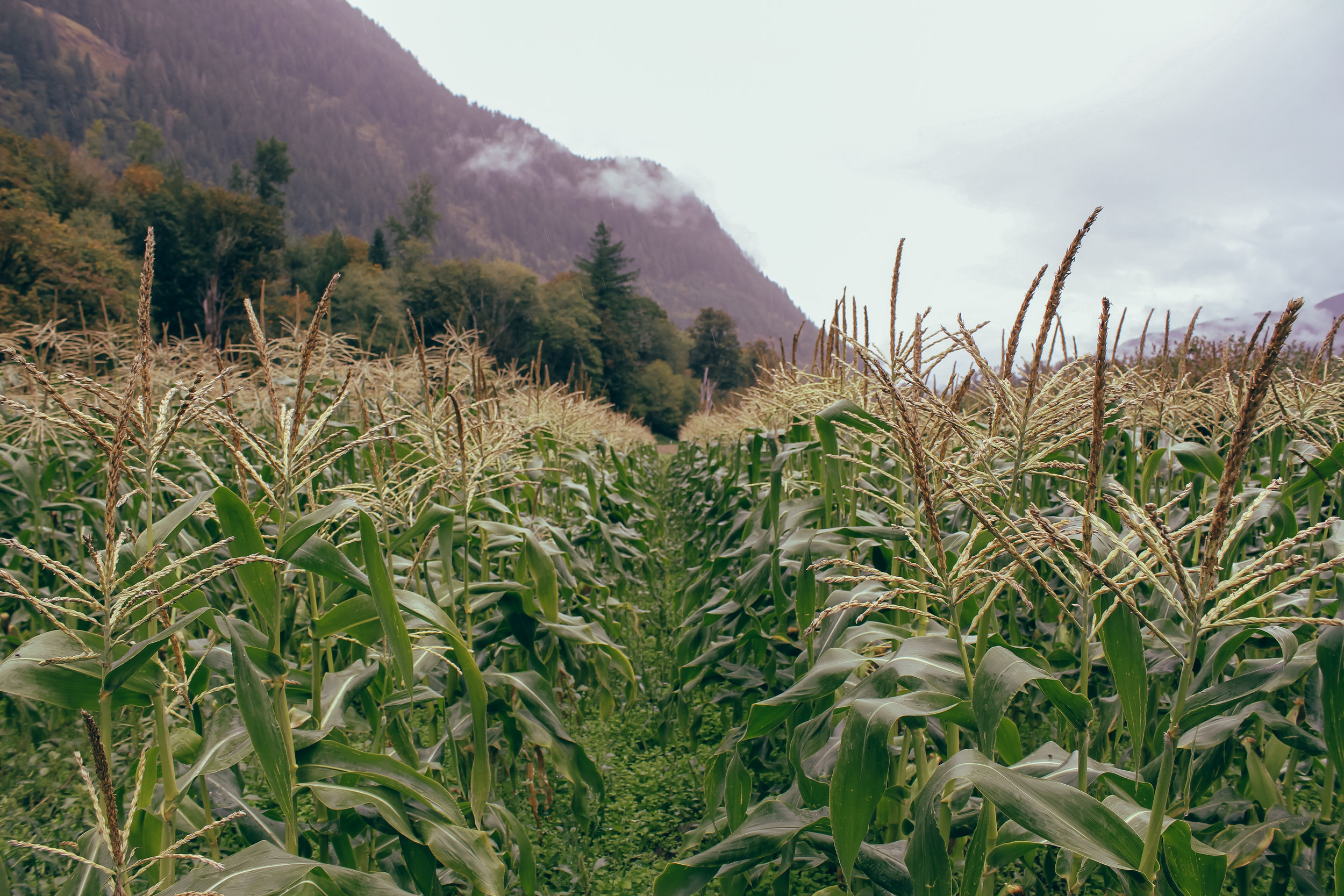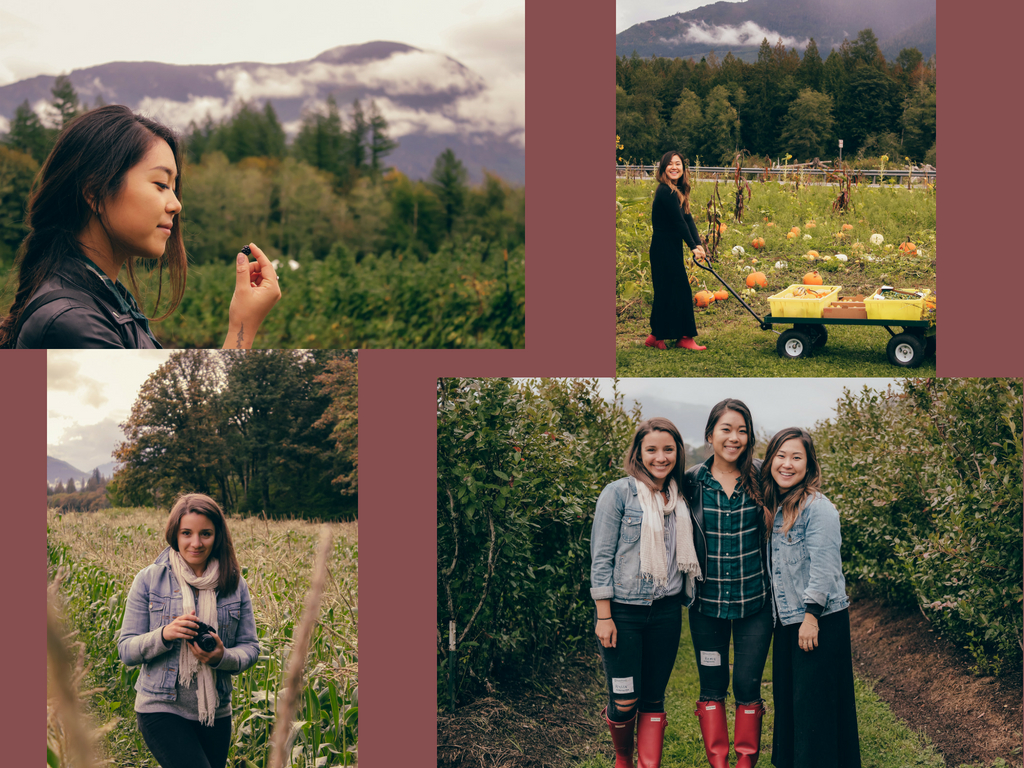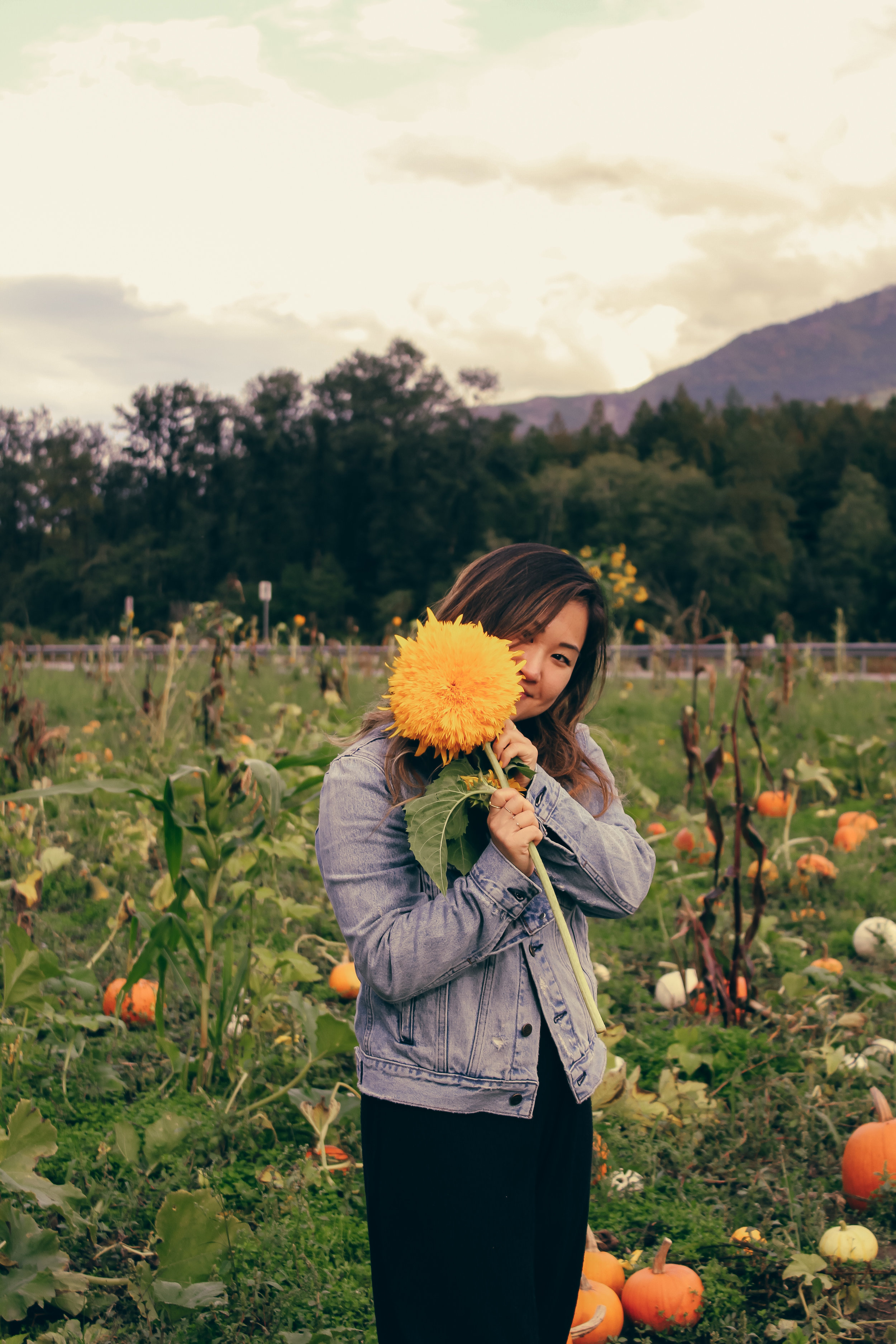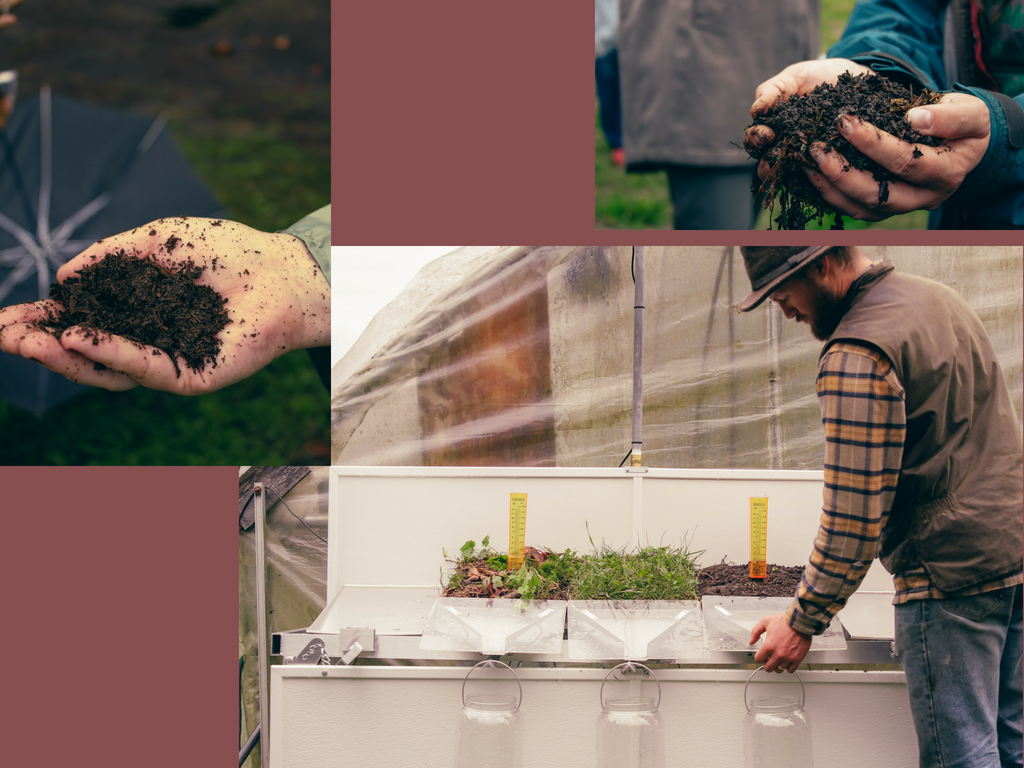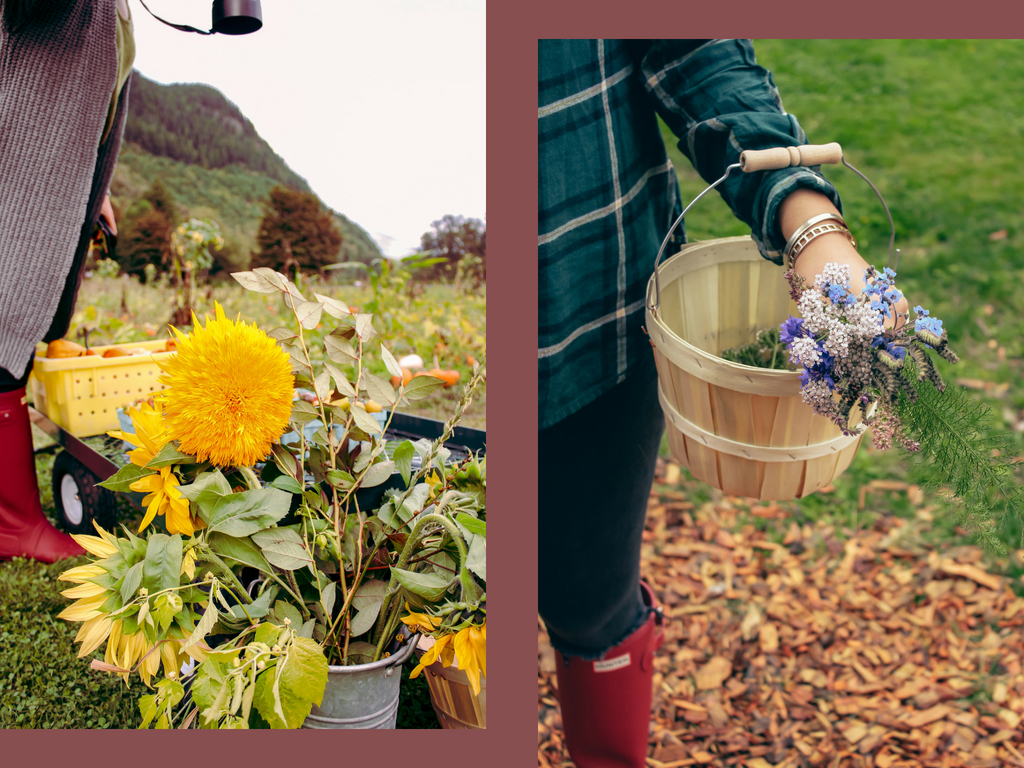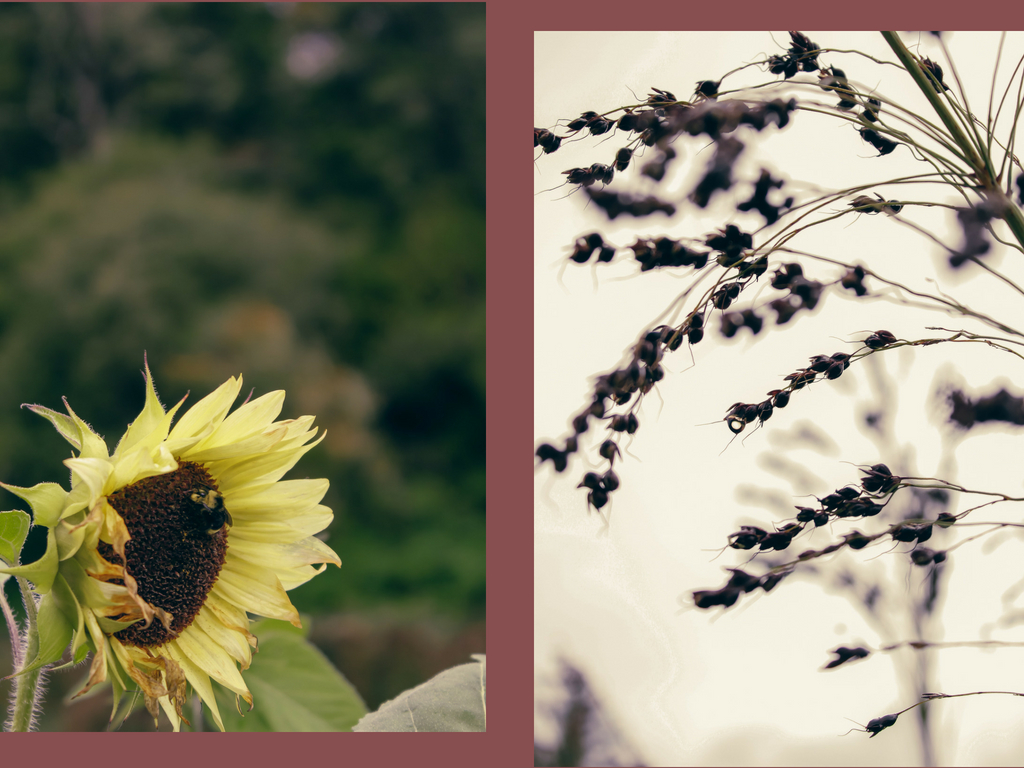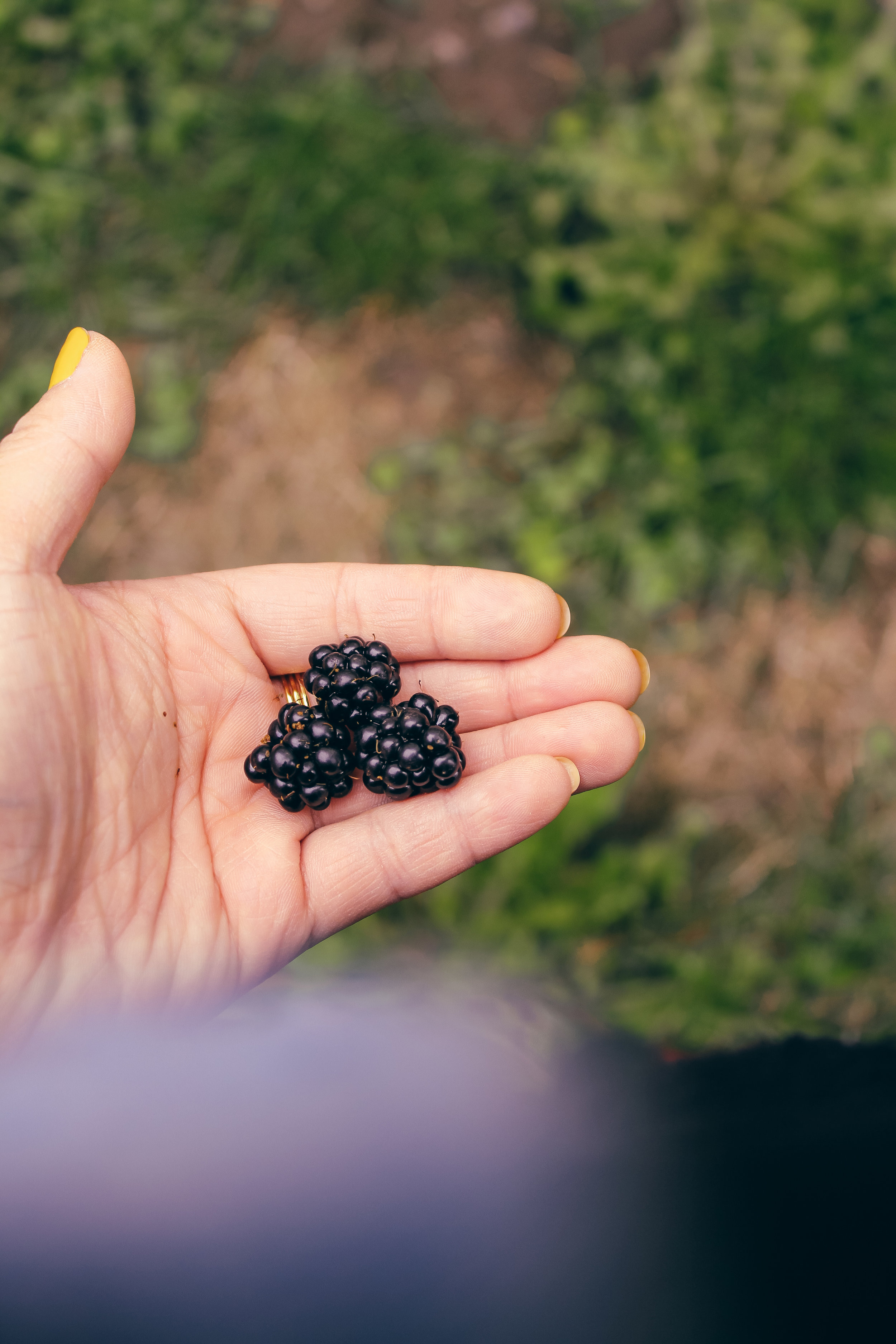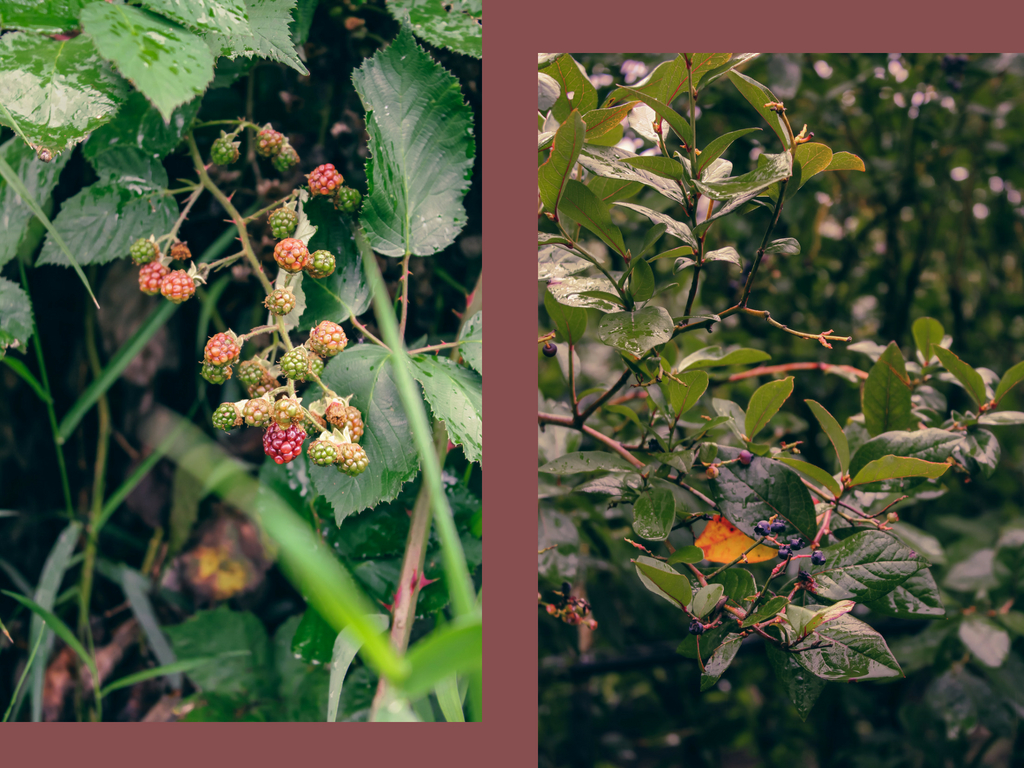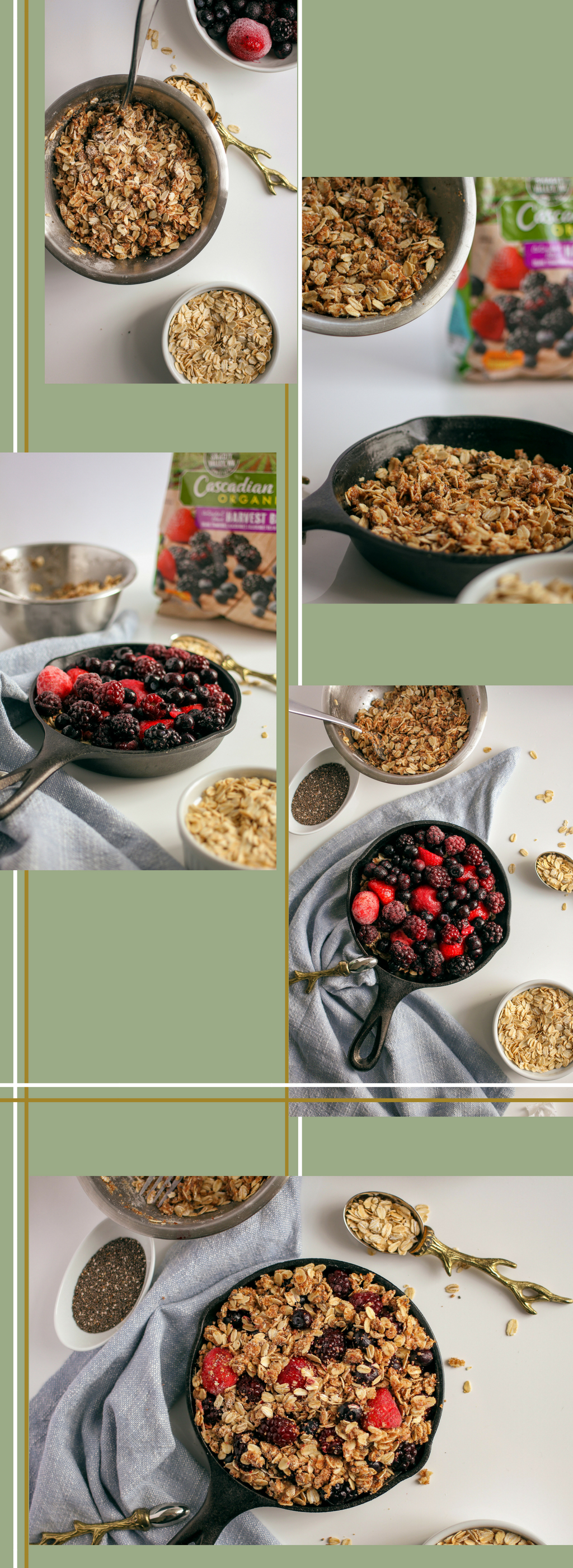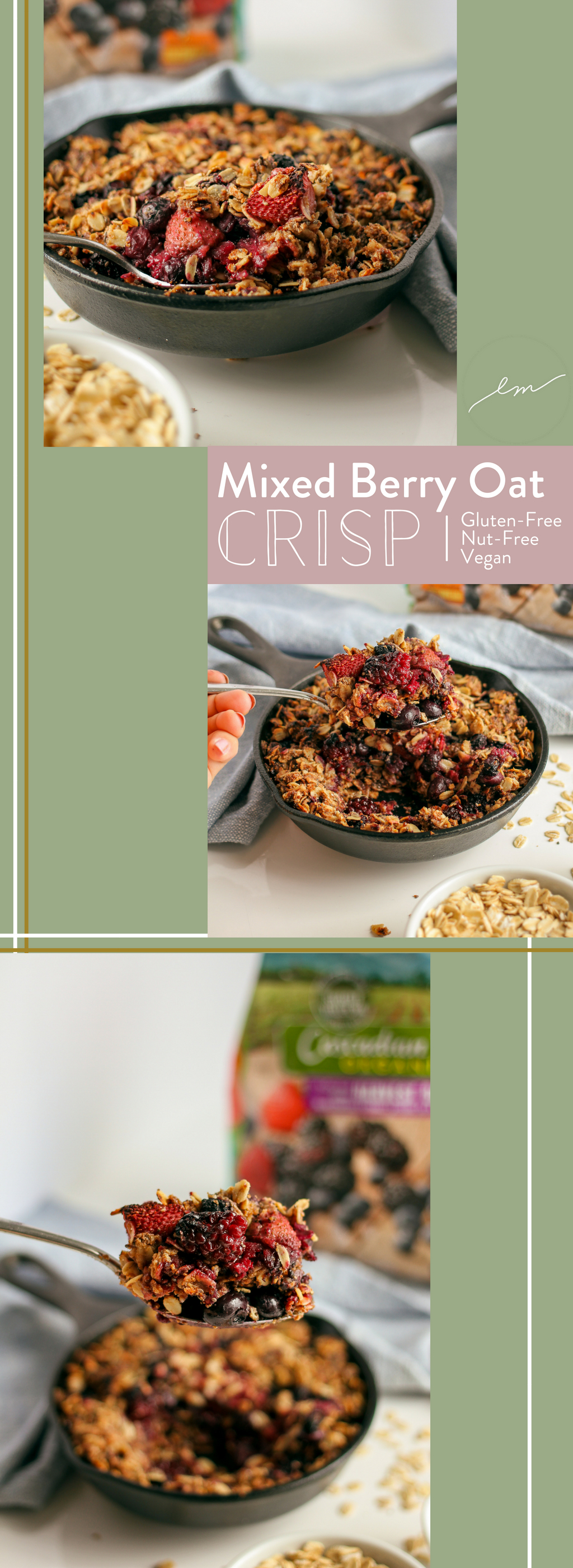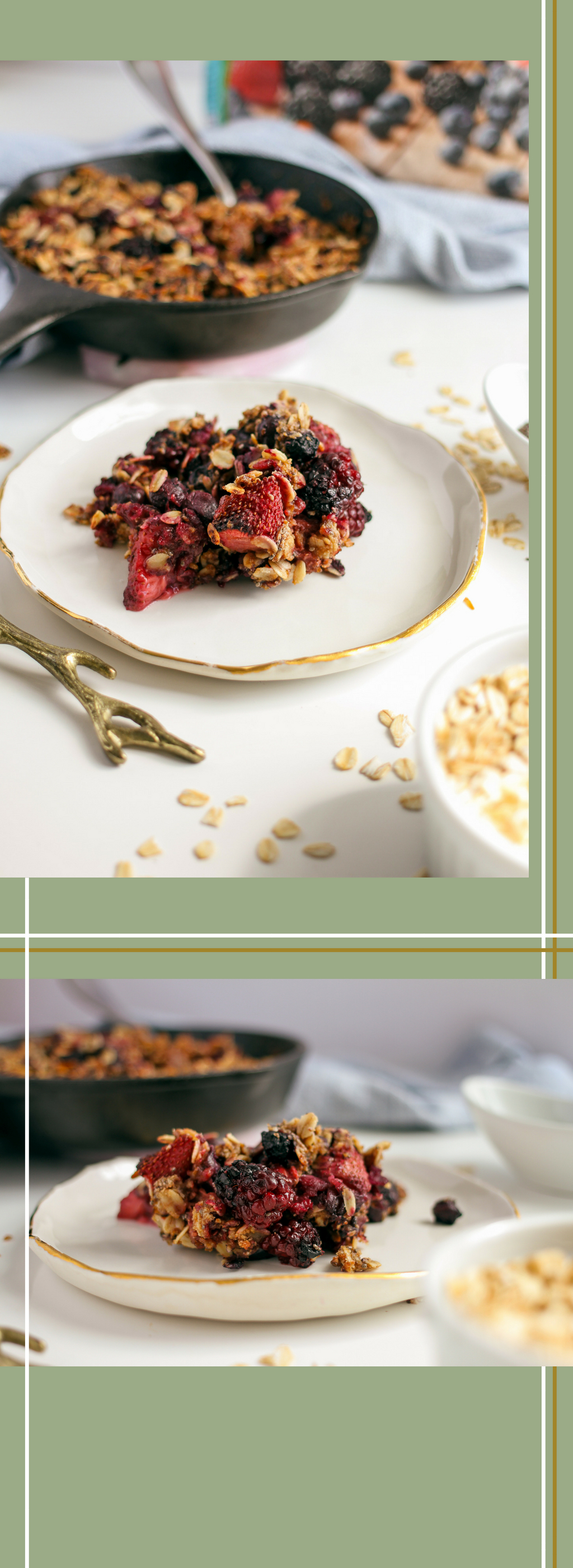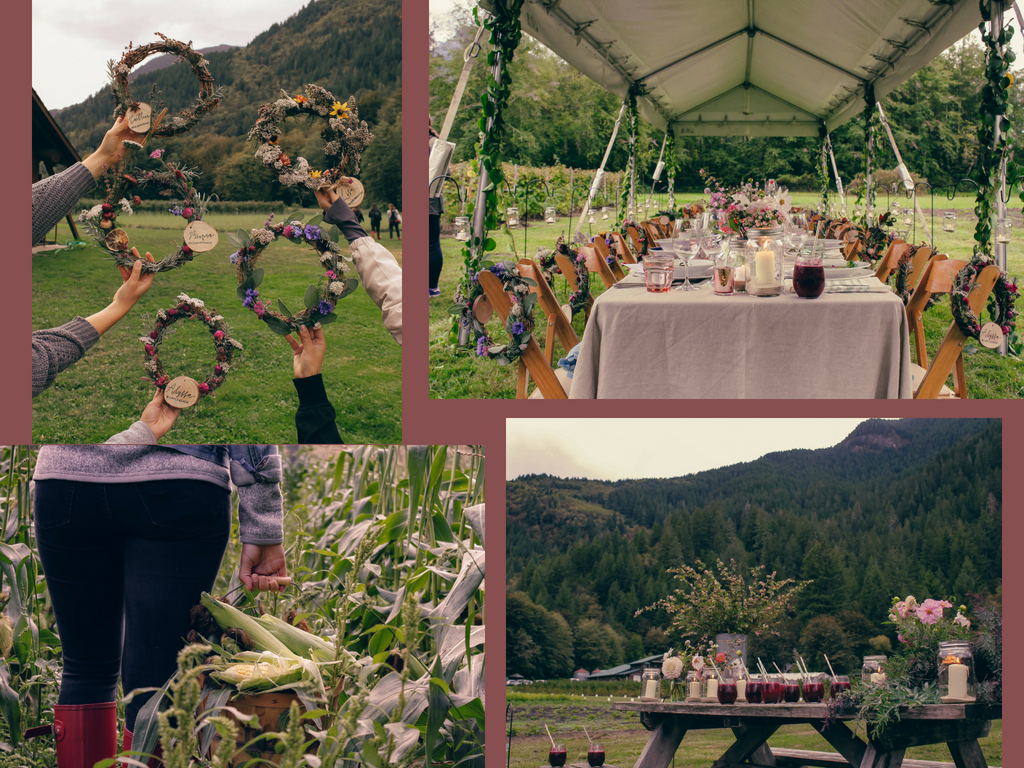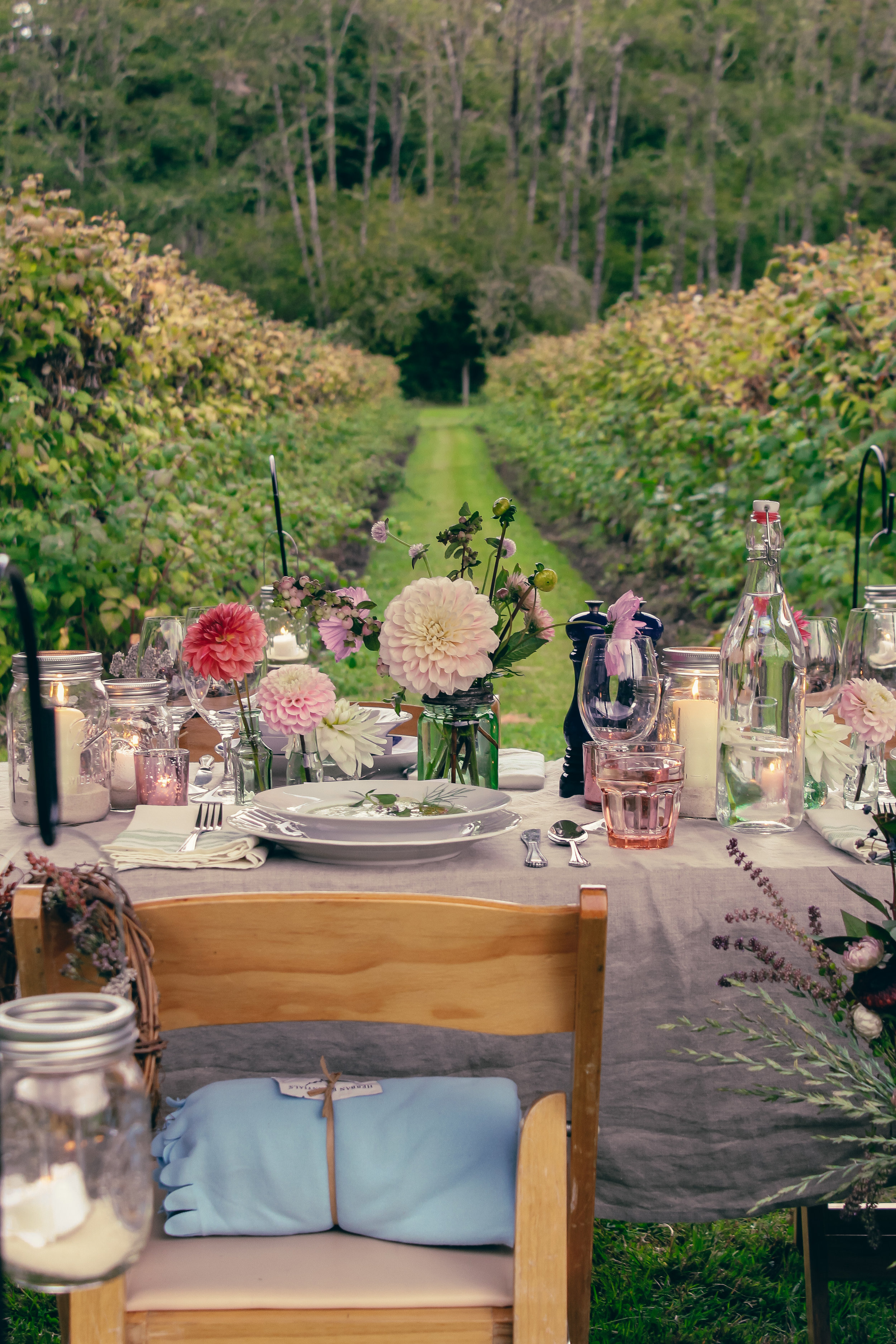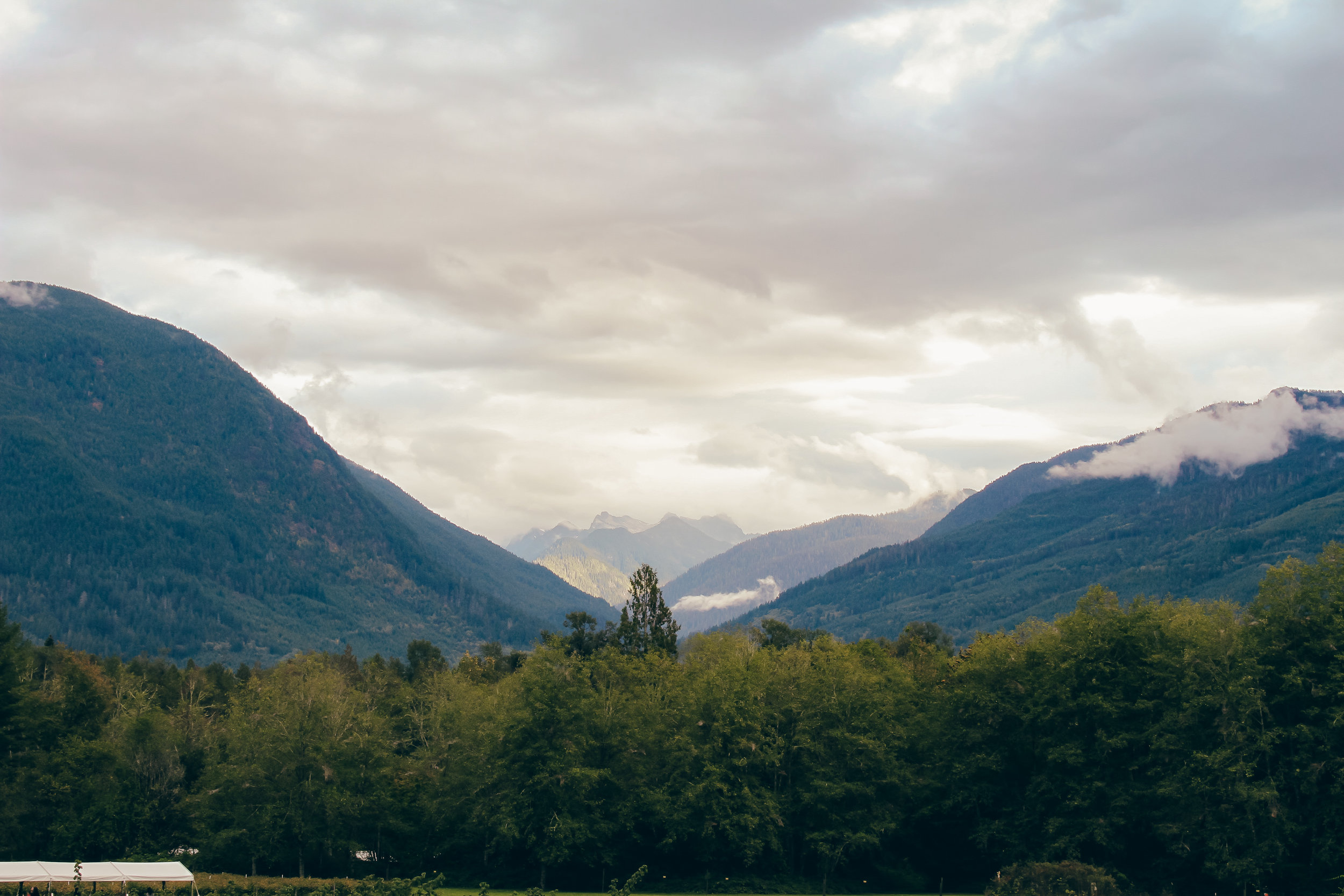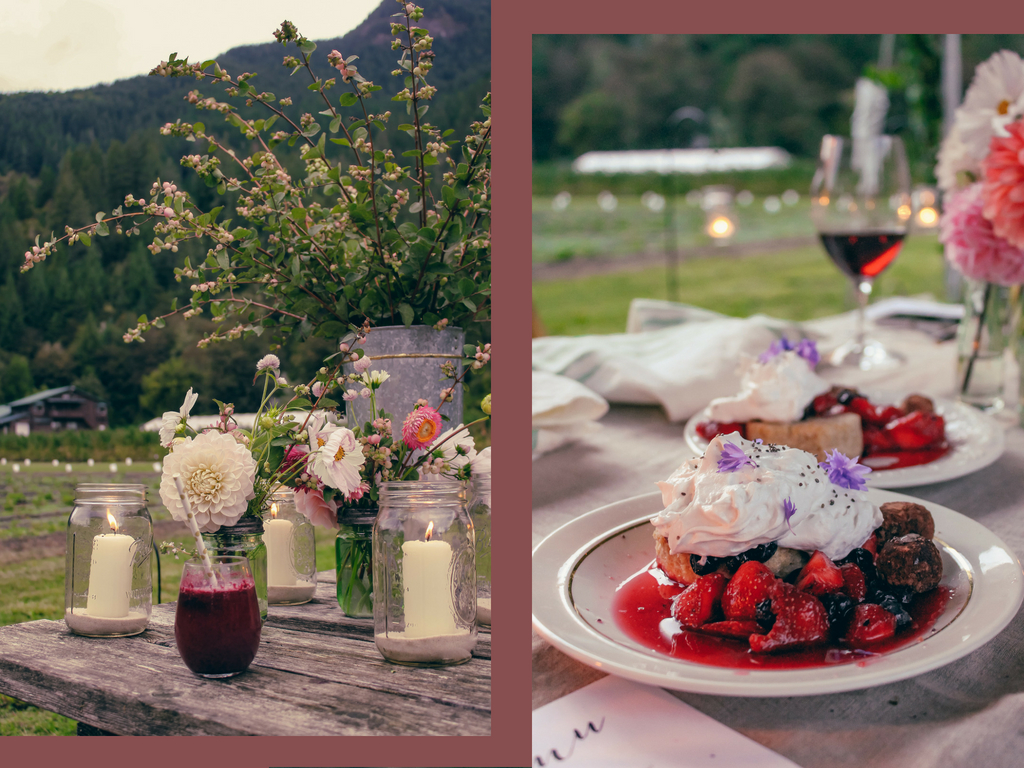Mixed Berry Oat Crisp (GF/Vegan) Recipe + Sustainable Organic Food Farming
When I found out that I’d be going to the Pacific Northwest to go to see Cascadian Farm for myself in person with The Feedfeed + Cascadian Farm, I knew that it would be beautiful out there— I just wasn’t prepared for how incredibly scenic it all is and also how much I’d learn about farming practices. It’s so important to know how big of a difference companies can make if they make a commitment to it, and what we as informed consumers can also do to support our food and Earth.
It was also personally just fun to see where the berries for my Blueberry Lavender Tonic came from, as well at the mixed berries for this droolworthy, gluten-free + vegan Mixed Berry Oat Crisp recipe I’ll be sharing with you on this post after all the gorgeous farm pictures and really cool information about farming practices, our environment, and how we can support those things and our bodies simultaneously!
We started off by taking a bus up to the Skagit Valley early in the morning and arrived to the farm just in time for a beautiful little breakfast spread with the whole gang. After this, we embarked on a little tour of the farm, and that’s where it got super interesting…
The Farm Tour
Touring around the farm with the Cascadian Farm team was so informative— not only about their own practices, but how important these farming practices are across the board for everything from climate change, the quality of the nutrition in the food we grow, and saving the bees. Knowing this information makes me want to support organic farming practices even more than I already do, and makes me understand why we as consumers want to putting the power of our spending dollars behind companies committed to not only preserving but regenerating our Earth.
I love that Cascadian Farm has committed to reducing their greenhouse emissions by 28% by 2020 (and 50-70% by 2050)— and not only them, but the rest of the brands in their General Mills family. I love supporting small businesses too of course, but I also love supporting corporations dedicated to doing better because they have the ability to wield a massive impact with their choices made by using regenerative practices.
What is the difference in sustainable farming + regenerative farming?
One thing I always thought about was sustainable farming practices, but I was happy to learn about regenerative farming. Regenerative farming is the act of not only preserving our natural resources, but utilizing farming practices that actually improve the ecosystem and farming communities by feeding it right back. Some of the common practices farmers can use are:
1. Crop Rotation.
The practice of changing the location of annual crops between different fields, in order to give the soil a varied diet and replenish nutrients that grow into the food we eat. Think about it this way— us humans need a varied and diverse diet, and so do plants! Certain crops also strip soils of certain nutrients and also give certain nutrients back to the soil— so it’s important to switch it up to keep the soil healthy!
2. Cover Crops.
The healthiest soils have some type of plant life growing on them all the time— it helps smother weeds, reduce soil erosion, and supports its microbes. Some cover crops include buckwheat, clover, and field radish!
3. Compost— aka Black Gold.
Cascadian Farm calls their compost, “Black Gold.” It’s true— their compost made of grass clippings, finished field crop matter, sawdust, and organic waste actually smelled super clean (pictured above!)and fresh! This rich compost helps nourish the plants, retain water, and build healthy soil without using synthetic chemical fertilizers.
And of course, like with all efforts to improve on something, it doesn’t matter unless you track your impact. Cascadian Farm doesn’t just promise to make changes— they actively track and measure their efforts to see what is working well and what may not be.
Did you know?
By mandate of the National Organic Standards Board, organic farmers are required to protect + maintain the biodiversity around their farms? The earth works in cycles, so it’s great they encourage protecting all aspects.
Soil matters. Healthy soil has microbes that help break down organic matter into nutrients that plants need. It also retains more water, draws down carbon dioxide from the air (helping manage greenhouse gasses responsible for climate change)— so by building healthier soil, you can support natural ecosystems and impact climate change in the process.
You’ve heard that protecting bees are important, but why?
I knew that this was a fact, but I couldn’t tell you the nuanced reasons of why until now really!
Bees are pollinators, so they obviously pollinate crops to help them grow— they pollinate nearly 2/3 of the major U.S. crops (think of some of your favorites, like coffee, chocolate, cotton, tomatoes!) and crops like clover and alfalfa, which are necessary to feed cattle and other grazing animals. But they’re disappearing, due to a number of reasons, like pesticides— this is why it’s so important to support organic farming and also plant wildflowers (specific to your region— find yours here) to create safe habitats for these lil’ guys. Bee Friendler is a great website to learn more on how you can support!
Okay, now that we talked all about supporting where our food comes from, let’s get to our food!
I felt like such a little kid, getting to pick these fresh and goooorgeous blueberries and blackberries right off the bushes on the farm! It made me want to create a berry-centric recipe with their Harvest Berries when I got home. That plus the crisp fall weather finally arriving made me crave a hot crisp in a cast-iron skillet because YUM.
This Mixed Berry Oat Crisp is gluten-free, vegan, nut-free, and almost laughably easy to make— it’s the perfect thing to throw in the oven on a chilly weekend morning to eat dessert for breakfast😉
Mixed Berry Oat Crisp (GF/Vegan/Nut-Free)
Ingredients
1 cup Cascadian Farms Harvest Berries
1/2 cup Oat Flour
1 cup Raw Rolled Oats
1/3 cup Raw Coconut Sugar
4 tbsp Coconut Oil, chilled, + more for greasing skillet.
Equipment needed: Cast-iron skillet (I used 6-inch size)
Recipe
Preheat oven to 425ºF and lightly grease 6-inch cast iron skillet or small baking dish with coconut oil if not already seasoned (for cast iron skillets).
In a small bowl, combine oats, oat flour, and coconut sugar. Mix well. Add chilled coconut oil to mixture, and use a fork to "cut" in the oil (as you would with butter for a pie crust) to achieve a crumbly oat mixture.
Place about 2/3 of the oat mixture in the skillet, followed by the Harvest Berries, then crumble the rest of the oat mixture on top.
Place skillet in the oven and bake for ~30-35 minutes until fruit is softening and the oats are crisping brown on the top.
Remove skillet from oven and let cool for a few minutes. Serve!
Tip: A scoop of greek yogurt goes deliciously on top- you could also do cashew cream, almond-milk yogurt, or lactose-free yogurt if you have food restrictions/allergies.
Lastly, I’ll leave you with these dreamy images of this epic dinner on the farm with the dahlias and food of my dreams!



